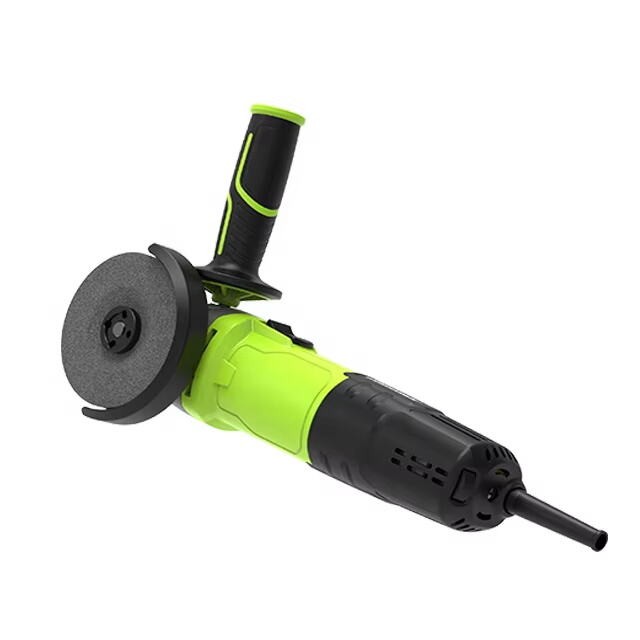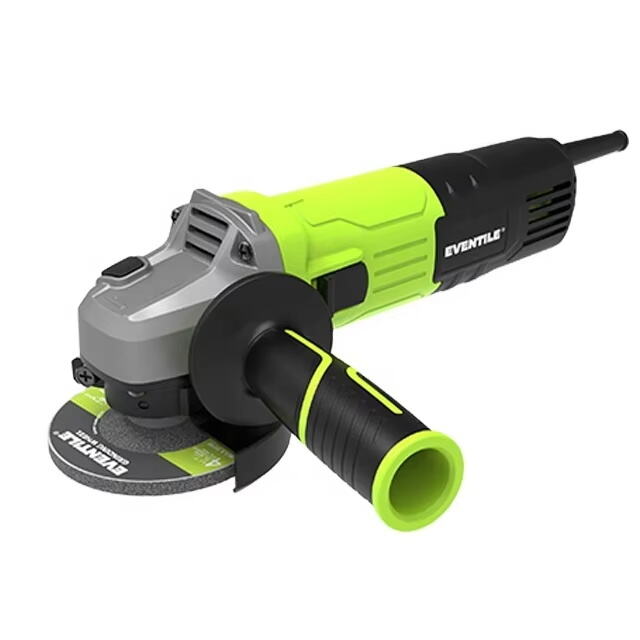정밀한 접착제 제거는 설계에서부터 시작됩니다
접착제를 효율적으로 제거하기 위해서는 단순한 물리적 힘 이상의 것이 필요합니다. 정밀함과 기술, 그리고 올바른 도구 설계가 요구됩니다. 긁어내는 도구인 스크래퍼에서 자주 간과되는 가장 중요한 요소 중 하나는 블레이드 각도입니다. 블레이드 각도는 스크래퍼가 접착 물질을 효과적으로 관통하고 들어올려 제거할 수 있는지, 그리고 그 과정에서 바탕 표면을 손상시키지 않을 수 있는지를 결정합니다. 블레이드 각도의 영향을 이해하면 DIY 애호가와 전문가 모두 피로감을 덜 느끼고 표면 마모를 줄이며 더 깨끗하고 빠른 결과를 얻을 수 있습니다.
블레이드 각도의 기초
스크래퍼에서의 블레이드 각도 정의
그 blade angle 날의 절단 가장자리가 표면에 닿는 각도를 의미합니다. 긁는 도구 설계에서는 일반적으로 이 각도를 도 단위로 측정합니다. 각도가 낮을수록 날이 표면에 가까이 위치하고, 각도가 높을수록 더 세워진 상태가 됩니다. 다양한 작업에는 최적의 성능을 내기 위한 각도가 다르므로 접착제 제거를 위해서는 적절한 각도를 선택하는 것이 중요합니다.
일반적인 각도 범위 및 적용 범위
대부분의 긁개는 날 각도 20도에서 60도 사이로 설계되는 경우가 많습니다. 낮은 각도(20~30도)는 유리 위의 스티커 제거처럼 정밀도가 필요한 섬세한 표면에 적합합니다. 높은 각도(40~60도)는 보다 큰 힘이 필요한 단단하거나 거친 표면에 더 효과적입니다. 올바른 날 각도 선택은 접착제의 재질과 그 접착제가 적용된 표면에 따라 달라집니다.
날 각도가 긁는 효율성에 미치는 영향
관통력과 들림
칼날의 각도는 칼날이 얼마나 깊게 접착층을 뚫는지 결정합니다. 은 각도 때문에 잎은 얇은 필름 아래로 더 쉽게 미끄러져 최소한의 저항으로 들어올릴 수 있습니다. 이것은 건조 된 접착성 잔류 또는 필름 코팅을 제거 할 때 특히 효과적입니다. 반면, 절단 한 날개 각도 는 아래로 더 큰 압력을 가해 두꺼우고 고집 한 접착제를 긁는 데 더 적합 합니다.
표면 손상 감소
잘못된 날 각도는 기판 표면이 파여지거나 긁히는 원인이 될 수 있습니다. 민감한 표면에 너무 높은 각도로 날을 사용하면 되돌릴 수 없는 손상이 발생할 수 있습니다. 올바르게 설계된 날 각도는 효과적인 접착제 제거를 유지하면서 스크래퍼가 매끄럽게 움직일 수 있도록 하여 표면 마모 위험을 크게 줄이고 마감 품질을 향상시킵니다.
재질 유형에 맞춘 날 각도 선택
접착제 종류
모든 접착제가 동일하게 만들어지는 것은 아닙니다. 테이프 및 라벨에 사용되는 압력감지형 접착제는 종종 낮은 블레이드 각도로 제거할 수 있습니다. 에폭시나 건설용 접착제는 경화된 재질을 자르기 위해 더 가파른 블레이드 각도가 필요할 수 있습니다. 접착제의 종류를 아는 것은 최적의 블레이드 각도와 긁개 구성 여부를 결정하는 데 도움이 됩니다.
표면 재료
유리, 나무, 석고보드, 금속 등 각 재질은 긁을 때 다르게 반응합니다. 낮은 블레이드 각도는 유리 표면에 긁힌 자국을 남기지 않고 접착제를 깨끗이 제거하는 데 이상적입니다. 석고보드나 나무의 경우, 중간 정도의 블레이드 각도는 효과적인 제거와 표면 보호 사이의 균형을 제공합니다. 콘크리트와 같은 무거운 재질은 더 나은 충격과 효율성을 위해 더 가파른 블레이드 각도를 적용하는 것이 유리할 수 있습니다.
인체공학 및 블레이드 각도 상호작용
힘 분배
사용자의 힘은 긁개를 통해 블레이드에 전달되며, 블레이드 각도는 그 힘이 어떻게 분배되는지를 좌우합니다. 낮은 블레이드 각도는 힘을 더 넓은 표면에 분산시켜 부드럽거나 쉽게 손상되는 표면에 적합합니다. 보다 가파른 각도는 힘을 좁은 가장자리에 집중시켜 중작업에 적합하지만 사용자에게 피로를 유발할 수 있습니다.
사용자 편안함과 피로
블레이드 각도는 성능뿐 아니라 사용자의 편안함에도 영향을 미칩니다. 각도가 잘못 설정된 긁개는 더 많은 노력과 부자연스러운 손목 각도를 요구하여 피로를 빠르게 유발할 수 있습니다. 현대식 긁개 설계에서는 종종 조절 가능한 블레이드 각도나 인체공학적으로 설계된 손잡이를 채택하여 사용자의 편안함을 유지하면서 이상적인 각도를 유지하도록 돕습니다.

블레이드 각도 설계의 혁신
조절 가능한 블레이드 각도 메커니즘
일부 고급 긁개에는 조절 가능한 블레이드 각도 메커니즘이 탑재되어 있습니다. 이를 통해 작업에 따라 블레이드 각도를 미세 조정할 수 있습니다. 유리 위의 접착제 제거에서 콘크리트 위의 페인트 제거로 작업이 바뀌더라도 이러한 유연한 설계는 여러 도구를 사용하지 않고도 다용도로 효과적으로 작업할 수 있게 해줍니다.
특수 블레이드 형상
엔지니어들은 또한 곡선형 또는 경사형 모서리와 같은 비선형 블레이드 형상도 실험하기 시작했습니다. 이러한 형상은 다각적인 접촉 지점을 제공하여 표면 적응성과 효율성을 높여줍니다. 이러한 혁신들은 전문가 수준의 결과를 얻기 위해 블레이드 각도가 얼마나 중요한지를 더욱 강조하고 있습니다.
블레이드 각도 사용을 위한 실용적 가이드라인
적용 전 테스트
대규모 접착제 제거 작업을 시작하기 전에 눈에 띄지 않는 작은 부위에서 긁개와 블레이드 각도를 항상 테스트하십시오. 이는 표면에 손상을 주지 않으면서도 블레이드 각도가 적합한지를 확인하는 과정입니다. 이 간단한 단계는 비용이 많이 드는 수리를 방지하고 작업을 매끄럽게 진행하는 데 도움이 됩니다.
블레이드 각도와 열 또는 용제의 병합 사용
어려운 상황에서는 블레이드 각도만으로는 충분하지 않을 수 있습니다. 적절한 각도로 설계된 긁개와 열(히트건을 통해) 또는 접착제용 용제를 함께 사용하면 제거 효율을 크게 향상시킬 수 있습니다. 열은 접착제를 부드럽게 만들어 블레이드 각도가 덜 저항을 받으며 보다 효과적으로 작동할 수 있게 합니다.
최적의 블레이드 각도 성능을 위한 유지보수
날의 날카로움과 마모 상태
블레이드의 효과는 각도뿐만 아니라 가장자리의 날카로움에도 달려 있습니다. 무딘 날은 각도와 관계없이 성능이 저하됩니다. 정기적으로 블레이드를 점검하고 교체하여 이상적인 절단 상태를 유지하십시오. 일부 긁개는 일관된 교체 각도를 유지하는 데 도움이 되는 각도 지시기가 포함되어 있습니다.
보관 및 보호
날의 가장자리와 각도를 보호하는 방식으로 긁개를 보관하는 것은 매우 중요합니다. 블레이드 가드 또는 수납식 설계는 흠집을 방지하고 각도의 정확성을 유지하는 데 도움이 됩니다. 도구를 깨끗하고 건조하게 유지하는 것도 장기적인 신뢰성과 일관된 성능을 보장합니다.
산업 및 전문 응용 분야에서의 블레이드 각도
제조 및 건설
산업용 접착제 제거 작업에서는 규모와 소재의 복잡성으로 인해 블레이드 각도가 더욱 중요해집니다. 자동 긁어내기 시스템에는 특정 소재에 맞게 사전 교정된 블레이드 각도가 적용되어 있어 효율성을 높이고 손상을 최소화합니다. 건설 현장에서는 최적화된 블레이드 각도를 가진 휴대용 긁개가 표면 마감 및 밀폐 처리를 위한 준비 작업에 사용됩니다.
복원 및 리모델링
특히 역사적인 건축물의 복원 작업에서는 오래되거나 민감한 소재를 손상시키지 않기 위해 블레이드 각도 조절이 필수적입니다. 전문 복원 인력은 종종 좁은 블레이드 각도를 가진 맞춤형 긁개를 선택하여 건축물의 구조적 완전성을 해치지 않으면서 페인트나 접착제의 여러 층을 벗겨냅니다.
자주 묻는 질문
유리에서 접착제를 제거하기 위한 이상적인 블레이드 각도는 무엇인가요?
유리에 대해서는 약 20~30도의 낮은 블레이드 각도가 이상적입니다. 이 각도를 사용하면 접착제를 깨끗하게 제거하면서 긁힘의 위험을 최소화할 수 있습니다.
모든 긁개에서 블레이드 각도를 조정할 수 있나요?
모든 긁개에 블레이드 각도 조절 기능이 있는 것은 아닙니다. 하지만 일부 고급 모델에서는 다양한 작업에 맞춰 유연성과 편안함을 높이기 위해 이 기능을 제공합니다.
단순히 날카로운 블레이드를 사용하는 것보다 블레이드 각도가 더 중요한 이유는 무엇인가요?
날카로움이 중요하지만, 블레이드 각도는 힘이 어떻게 가해지는지와 접착제 및 표면과의 상호작용 효율성을 결정합니다. 두 요소가 함께 작용하여 최상의 결과를 제공합니다.
모든 표면에 적용할 수 있는 보편적인 블레이드 각도가 있나요?
모든 작업에 적합한 보편적인 블레이드 각도는 없습니다. 최적의 각도는 접착제 종류와 표면 소재에 따라 달라지므로 효율성과 안전성을 위해 올바른 각도를 선택하는 것이 중요합니다.


